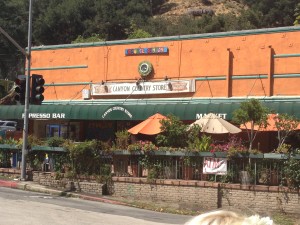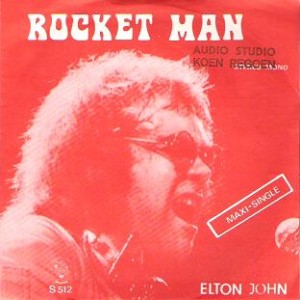

Just traveled to California and drove up and down Laurel Canyon and thought not only about Joni Mitchell, who has been such a source of controversy here, mostly backstage, but my love of music very generally and where it began.
In 1972, my mother moved us (parents were divorced) to the Mojave Desert — Yucca Valley, CA. Geologically and geographically different from Laurel Canyon, yet sharing that same artsy vibe (only the poor artists live in the desert).
The people we hung with, the new friends and relatives, aunts and uncles I hardly knew, were mostly listening to that Canyon music — Mitchell, Carole King, Carly Simon, Todd Rundgren, Crosby, Stills, Nash & Young, Linda Ronstadt, Jackson Browne, Seals and Crofts and, of course, some non-California acts like the Rolling Stones.  (I especially remember the hours I spent staring at Goats Head Soup’s cover and how horrified I was of the image of that soup where, now, what’s truly horrifying about that album is how it marked the beginning of the end of the greatest Rock and Roll Band in the world.)
(I especially remember the hours I spent staring at Goats Head Soup’s cover and how horrified I was of the image of that soup where, now, what’s truly horrifying about that album is how it marked the beginning of the end of the greatest Rock and Roll Band in the world.)
At gatherings, the adults provided the soundtrack. But back home, in my room, lying on my waterbed, the radio was the only free form of entertainment I had. The scoops of ice cream cost $.05 cents at Thrifty’s and I think the occasional drive-in was $5 per car. I was before and am again now a TV junkie. But I never even saw a TV at any adult’s house. Not only was it looked down upon, but there was no reception in the high desert. Yet I still stubbornly spent many hours the first few weeks, maybe even few months, trying to get some signal from the black and white set I badgered my mother into bringing west. Alas, there were only faint ghosts of images, and only at night — nothing remotely watchable or even listenable. (Yes, I would have given anything to even LISTEN to TV.) So all that was left for me was my transistor radio — this model, I swear. 
Only the Hits station came in. I can’t say if that period was particularly good for music — that would be like asking the starving man to rate the hamburger you just gave him. But 1972’s top 100.it sure seemed good to me.
I loved “American Pie,” it was the first time I really noticed dramatic changes in sound within one song. And it was the first song where I really paid attention to the lyrics. “Brand New Key” by Melanie was inescapable. I didn’t like it then or now. But another kitschy song, “The Lion Sleeps Tonight” was pure childhood delight for me. I loved “Alone Again (Naturally),” oblivious to how sad it was. My love of soul music was forged here: “I Gotcha” by Joe Tex was most popular but I preferred Al Green’s “Let’s Stay Together,” “Lean on Me” by Bill Withers, “I’ll Take You There,” “Backstabbers,” “Oh Girl”…. I heard them all so many times that I may as well have owned the records (which nine year olds don’t buy even if they could afford to, which I couldn’t).
“Rocket Man” by Elton John sounded different from everything else, yet was so catchy and was the first time I heard one of those great Elton choruses that I grew to love so much.  While I really liked more iconic, Rock Remnants-certified rockers like “Long Cool Woman in a Black Dress” by the Hollies, “Go All the Way” by the Raspberries and “Bang a Gong” by T-Rex, I had ample room in my juvenile musical palate for Cat Stevens’s “Morning Has Broken,” too. That was the first time I really noticed how beautiful a piano could sound. I could hardly afford to hate much when hating required me to turn off the radio and thus my only connection to the outside world. I looked for things I liked in everything I heard and if I really hated something, like Melanie, I had to tolerate it anyway and give it every chance to change my mind (as some songs did — like “Hocus Pocus” by Focus — learned to love the guitar riffs, still hated the yodeling.)
While I really liked more iconic, Rock Remnants-certified rockers like “Long Cool Woman in a Black Dress” by the Hollies, “Go All the Way” by the Raspberries and “Bang a Gong” by T-Rex, I had ample room in my juvenile musical palate for Cat Stevens’s “Morning Has Broken,” too. That was the first time I really noticed how beautiful a piano could sound. I could hardly afford to hate much when hating required me to turn off the radio and thus my only connection to the outside world. I looked for things I liked in everything I heard and if I really hated something, like Melanie, I had to tolerate it anyway and give it every chance to change my mind (as some songs did — like “Hocus Pocus” by Focus — learned to love the guitar riffs, still hated the yodeling.)
1973’s top 100 gave me “Me and Mrs. Jones” by Billy Paul, which seemed so grown up and off limits, but man, did I love it on those lonely desert nights while trying not too hard to go to sleep. But I also loved polar opposite songs like “Frankenstein” by Edgar Winter (Hocus Pocus without the yodeling!) and “Little Willy” by Sweet, which may as well have been The Archies to my ear. It was pure kid music, barely less silly than “The Monster Mash,” another 1973 hit. And about monsters! “Will It Go Round in Circles” by Billy Preston was a pleasure for me every time, as was “Superstition,” “Stuck in the Middle with You,” “Live and Let Die,” “Daniel,” “Superfly,” “Love Train,” “That Lady” and the also-so-grown-up “Wildflower” by Skylark. “Bad, Bad Leroy Brown” seemed like it was written just for nine-year-old boys and how could it be that this song inspired Freddie Mercury of all people? Music is such a wonderful chemistry experiment, a fact that comes into sharp relief when you can do nothing else but immerse yourself in it for two, long formative years.






